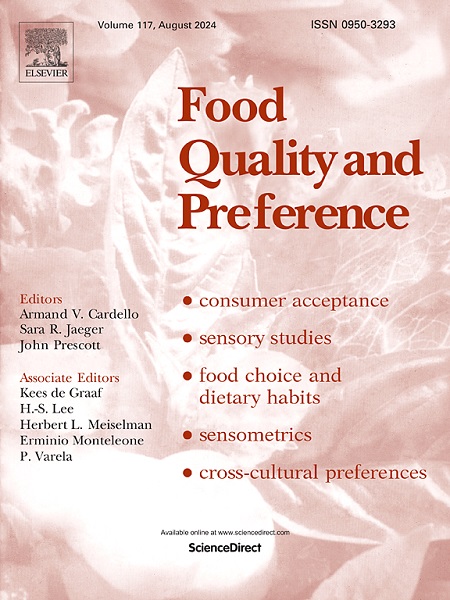Can natural language processing or large language models replace human operators for pre-processing word and sentence-based free comments sensory evaluation data?
IF 4.9
1区 农林科学
Q1 FOOD SCIENCE & TECHNOLOGY
引用次数: 0
Abstract
The free comment (FC) method enables the collection of insights on products based on consumers' natural language. The primary drawback is the need for extensive data pre-processing. This study compared the results of three data pre-processing techniques applied to FC data related to the perception of six madeleines by two panels of 100 consumers: manual pre-processing by four human experts, automated pre-processing by an expert system, and automated pre-processing by the large language model ChatGPT. Two modes of data collection were used: responses only with words or short expressions (“FC words”), or responses based on complete sentences (“FC sentences”). Various indicators (number of words extracted, number of concepts retained, pre-processing time, level of repeatability/discrimination/stability of findings) were computed and compared between data collection modes and pre-processing techniques. It was shown that the automated systems performed correctly with FC words; however, they were less effective at extracting relevant words from FC sentences. The findings from statistical analyses following automated pre-processing were less repeatable and discriminative compared to those from the most proficient human operators. It was also demonstrated that, beyond the overall differences between products, the pre-processing of FC data can be a major source of non-reproducibility in findings, depending on the operators and the level of detail they consider when extracting information. Finally, the advantages and disadvantages of each pre-processing technique were summarized, along with several recommendations for pre-processing and analysing FC data at the appropriate level of granularity to draw robust conclusions.
求助全文
约1分钟内获得全文
求助全文
来源期刊

Food Quality and Preference
工程技术-食品科技
CiteScore
10.40
自引率
15.10%
发文量
263
审稿时长
38 days
期刊介绍:
Food Quality and Preference is a journal devoted to sensory, consumer and behavioural research in food and non-food products. It publishes original research, critical reviews, and short communications in sensory and consumer science, and sensometrics. In addition, the journal publishes special invited issues on important timely topics and from relevant conferences. These are aimed at bridging the gap between research and application, bringing together authors and readers in consumer and market research, sensory science, sensometrics and sensory evaluation, nutrition and food choice, as well as food research, product development and sensory quality assurance. Submissions to Food Quality and Preference are limited to papers that include some form of human measurement; papers that are limited to physical/chemical measures or the routine application of sensory, consumer or econometric analysis will not be considered unless they specifically make a novel scientific contribution in line with the journal''s coverage as outlined below.
 求助内容:
求助内容: 应助结果提醒方式:
应助结果提醒方式:


